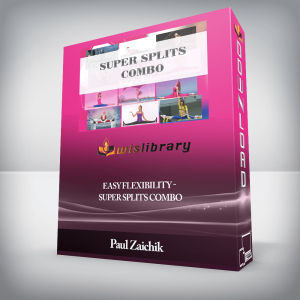The course is based on 120 essential skills and techniques covering the following areas:Purchase Hypnotherapy Lectures – Part 3 – Stephen Brooks courses at here with PRICE $255 $155The course is based on 120 essential skills and techniques covering the following areas:Indirect Hypnosis PrinciplesThe Interactional ApproachThe Intrapersonal ApproachImplication, compression and economic language Symptom Substitution and ResolutionThe Relationship Between Cause and Symptom Response AttentivenessAchieving Positive OutcomesCommunicating with the UnconsciousIdentifying Verifiable GoalsValues, Criteria and BeliefsAbreaction and TraumaIdentifying Sabotage Strategies Therapeutic Orientation – Change or Improvement?Motivating the Patient to Stay in TherapyFuture PacingSecondary Gains and Indirect BenefitsWeaning Patients Off TherapyUnderstanding the Patient’s metaphorsContextualising ChangeOrganic metaphors and Symptom Based metaphorsDeveloping Advanced Strategies to Deal With FailurePursuing RelevanceThe Structure of Learned ExperienceThe Irrationality and Framing ModelContextual and Time framesBenefits and CostsThe Laws of Attachment and Non-attachmentDecision Making Personality TypesAnchoring and ConditioningFeedback LoopsThe Laws of Reversed and Concentrated EffortThe Laws of Positive Expectancy and ReinforcementThe Laws of Observation, Utilization and ReframingIndirect Hypnosis TechniquesHypnotic Time Distortion Favourite Activity and Leisure Trance InductionsPseudo-Orientation in Time in HypnosisPositive Negative Integration in Hypnosis The Third Person DissociationHypnotic CatalepsyArm Levitation InductionsAutomatic Writing in Hypnosis Unconscious Negotiation in HypnosisRecalling Previous Trance as an Induction Surprise Technique InductionsTherapeutic metaphor The Multiple Mirror Therapeutic InductionAge Regression TechniquesParadoxical InterventionThe Old Master Induction Indirect Utilisation of Sub-modalitiesUptime Downtime InductionUtilising The Patient’s Needs As A Motivational StrategyStop Smoking StrategyInducing AmnesiaThe Self-Suggestion InductionTeaching Your Patient Self-HypnosisThe Four Seasons InductionCrystal Gazing and Multiple Screens Non Verbal InductionsIdeo-Motor SignalingThe My Friend John InductionCellular Healing TherapyThe Early Learning Set InductionScrambling SymptomsAmbiguous Task AssignmentsEye Fixation and Distraction InductionsThe Confusion InductionDeep Trance IdentificationHypnosis for Pain Control and AnaesthesiaIndirect Hypnosis SkillsTaking the Patient’s History High Quality Information GatheringCreating and Applying Therapeutic NominalisationsRecognising the Minimal Cues of TranceCreating Dependent SuggestionsOpen QuestioningPositive and Reverse frames and Negative TagsSorting for patterns of associationAdjunctive SuggestionsCalibrating to Positive & Negative Response CuesResponding to Polarity ResponsesClasses of Double BindsPassive Response SuggestionsUsing Therapeutic & Hypnotic Double EntendrePost Hypnotic SuggestionsSerial SuggestionsChallenging Negative NominalisationsSensory Based PredicatesOpen-ended SuggestionsResource AccessingFacial Symmetry Calibration Insertive Eye ContactRecognising Patients’ Subjective InterpretationsCasting Doubt and Challenging a Patient’s InterpretationsGetting Video s and Sequence ResponsesDesigning Therapeutic Tasks Prescribing and Delivering Tasks Developing a Compassionate Empowering PersonalityIntegrity and EthicsThe importance of patient confidentialityIntegrity and ethics within a hypnotherapy practiceWhen it might be better to partner with a co-therapistHow to maintain patient recordsWhen to terminate treatmentEthical and legal business management and practiceThe current status of hypnosis and codes of practiceMedical and psychological contraindications of hypnosisThe importance of requesting feedback and follow-up Recognition of psychiatric illnesses and when to refer Establishing clear guidelines regarding duration and costPractitioner DevelopmentCBT, humanistic and psychodynamic psychologyResearch methodology related to hypnosisThe history of hypnosis as a therapeutic approach objective evaluation of professional skill developmentThe need and value of supervision and ongoing trainingBasic physiology and anatomyRecent developments in brain science related to the mind Recognition of how previous treatment may affect therapyThe Hypnotic RelationshipDeveloping a caring and sincere approach to those in need.Patients general health and lifestyle management. Appropriate social and relationship skills for patients.Local resources and support groups available to patients. Identifying the patient’s expectations regarding outcomes Transference and counter transference Motivating patients to be an active part of the treatment. Secondary or external influences that affect therapyContextualizing treatment to the patient’s environmentHow to clearly communicate therapeutic optionsHow emotions can affect patients decisions and perception How to negotiate mutually acceptable therapeutic outcomes Evaluating the effectiveness of treatmentThese 10 Lectures in this part are:21. Six Step Reframing22. Calibrating to Positive & Negative Response Cues23. Recalling Previous Trance as an Induction24. Therapeutic metaphor25. Response Attentiveness26. The Multiple Mirror Therapeutic Induction27. Matching & Mirroring Breathing28. Age Regression Techniques29. The Staircase Induction30. The V K Dissociation TechniqueTag: Hypnotherapy Lectures – Part 3 – Stephen Brooks Review. Hypnotherapy Lectures – Part 3 – Stephen Brooks download. Hypnotherapy Lectures – Part 3 – Stephen Brooks discount.Purchase Hypnotherapy Lectures – Part 3 – Stephen Brooks courses at here with PRICE $255 $155

 Hypnotherapy Lectures – Part 7 – Stephen Brooks
₹25,730.00
Hypnotherapy Lectures – Part 7 – Stephen Brooks
₹25,730.00
 Hypnotherapy Lectures – Part 2 – Stephen Brooks
₹25,730.00
Hypnotherapy Lectures – Part 2 – Stephen Brooks
₹25,730.00
Hypnotherapy Lectures – Part 3 – Stephen Brooks
₹25,730.00




